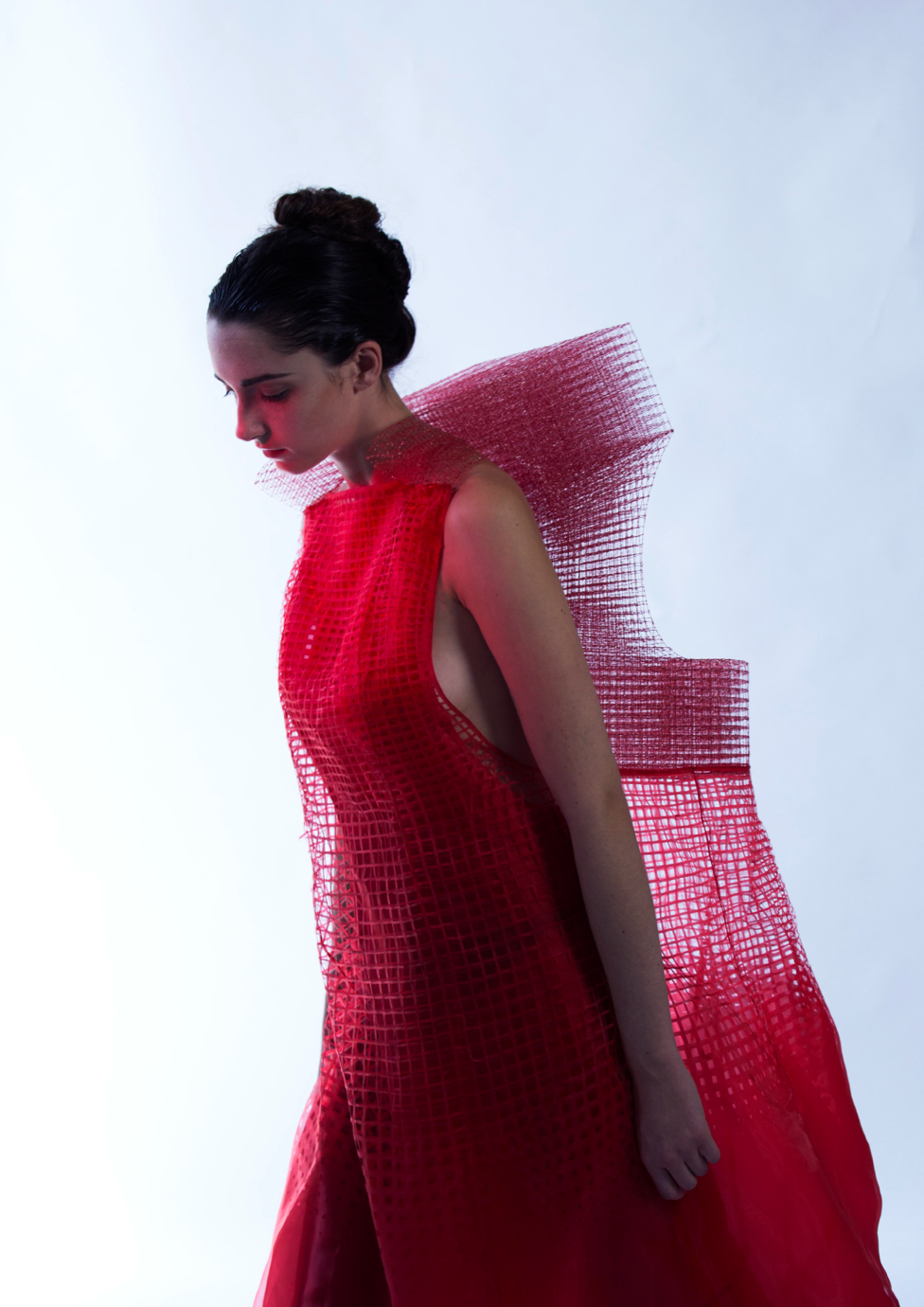Deanna Fanning: Where are you?
Luma Guarconi Louzada: I’m in Brazil, and it’s raining, so that’s kind of nice. My hometown is an island, so it’s always really hot. Are you both in London right now?
Laura Fanning: We’re in the studio at the moment, we normally wear masks, but we were like, let’s just, you know, look nice.
Luma: It’s a good opportunity to put on lipstick. I feel like we’ve all given up on that this year.
Deanna: Are you in your final year?
Luma: It’s been a long ride, but yes, I’m in my final year. Because of the pandemic I ended up just deciding to do it from here. And it’s been a pretty good decision for the lockdowns! Your collaboration with Kiko seems like a dream job. You graduated and got a job as creative directors, a position which in theory has a lot of freedom. On top of that, you are at a young brand, which is fun and offers space for more risks. Is that actually how it is, or is that just wishful thinking?
Laura: Because it was such a young brand, it took a while for the audience to understand that it wasn’t the same with Kiko men’s line, as it is not very common for a young brand to have someone in charge of menswear and someone else in charge of womenswear. The system is very regimented, so that was our biggest challenge. When you are independent and do something on your own, people don’t question your aesthetic as much, or ask questions like: ‘Why did you pick that fabric or why do you like colour? Is it because Kiko doesn’t like colour?’
But it’s indeed great because everyone’s super young in the studio, and everyone’s from different parts of the world. We’ve done a lot of collaborations and we’ve met a lot of people. So in that respect, it’s been really good because we do our own thing without the pressures of running a business.
Deanna: We don’t have a brief, we make the briefs. From a creative point of view, it’s definitely been really good.
Luma: That makes sense. And especially because, like you guys said, it’s a different view, it doesn’t feel just like Kiko putting clothes on women. How big is your team?
Laura: The team is very tiny. It is us, and then we have one other designer and, at the moment, we have two interns. In total, including us, Kiko, and his team, sales, the production manager, and the menswear and womenswear interns, there are about 13 people in the studio.
“We wanted to do our own thing, but we came up with a few roadblocks as we didn’t have any investment. We didn’t know anyone who wanted to invest in us.” – Laura Fanning
Luma: What were you thinking to do after graduation?
Laura: We wanted to do our own thing, but we came up with a few roadblocks as we didn’t have any investment. We didn’t know anyone who wanted to invest in us. And actually, a very famous journalist wasn’t so fond of our work. That was a little bit challenging because if you get that woman on your side, then she can really open doors for you.
Deanna: But if she’s not fond of you, she can definitely close them.
Laura: Not having any investment led us to explore other alternatives of how we can have our own world and create our own woman together. Consulting is a really good way of doing that, as well as creative direction for another brand. We wanted to work on projects because we don’t only love clothes, but also objects and shoes. We love having our own take on all these different things that build female identities. What we are doing now has been a good alternative to having a brand under our own name. In many ways, we get to do the same things we’d be doing if we did have our own brand. Apart from the challenges that we’ve described to you before, people are always relating our work to what they think Kiko would do.
Luma: It seems that you have enough freedom to actually do what you want versus having to adapt too much.
Laura: Yes. I also feel like in a way it, of course, isn’t actually our company. We are working under a company structure.











































